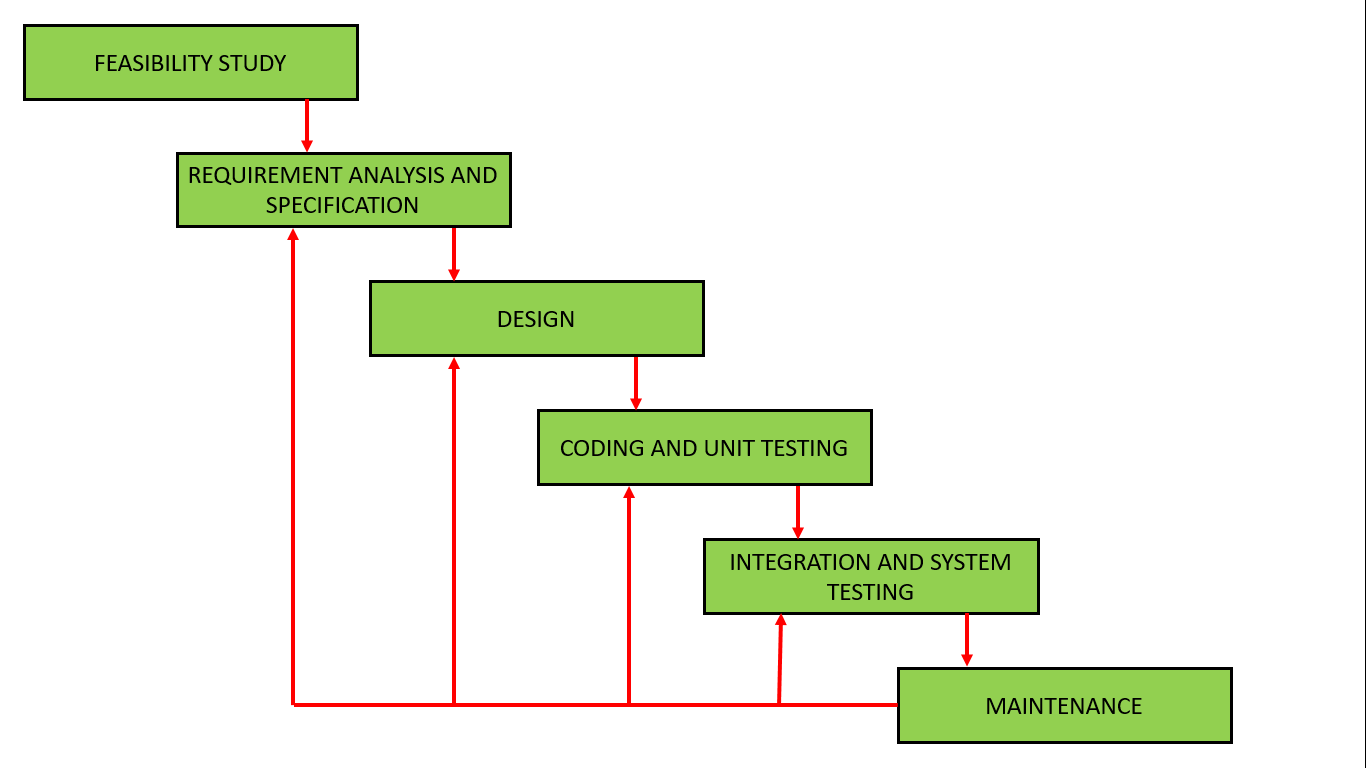Water Fall model
The waterfall model is the first process model which is also called a linear sequential life cycle model. It is the earliest approach to developed software systems. In this model, every phase must be completed before starting the next phase. In waterfall, phases do not overlap and the whole process of software development is divided into parts and the output of each part is the input of the next part.
Sequential phases in waterfall model designed:
Application of waterfall model:
We can use different SDLC for different software. which is based on what type of software we need and which process model is best for that particular software.
- Requirements are well defined and fixed
- Product output (definition) is stable
- Technology is understood and not dynamic
- The project is short
Advantages of water fall model
- Provide departmentalization and control
- Set deadline for each phase of development
- Development move from communication , Planning , Modeling , Construction and deployment
- Simple and easy to understand and use
- Clearly defined stages
- Each phase completed at time
- Process and results are well documented
Disadvantages of waterfall model
- Does not allow revision
- No working software produced until the late life cycle
- Poor model for long term projects
- The high amount of risk and uncertainty
- Cannot accommodate changing requirements
Waterfall model with Feed Back loop
With feedback loop waterfall model can provide facility of revision but it is still contain many problems.








0 Comments